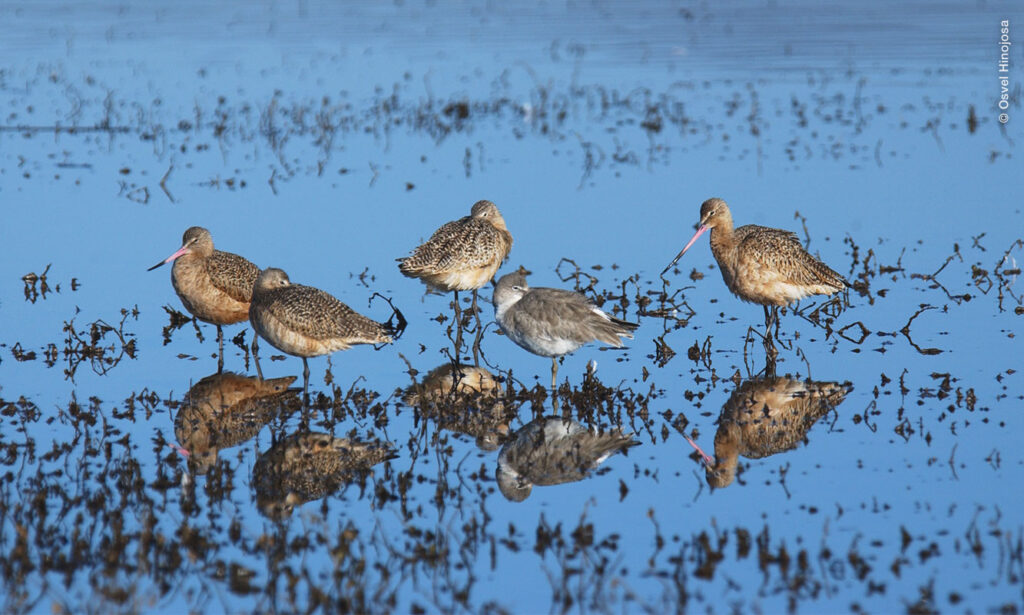Our Bird Conservation program works in three priority sites identified during the last decade. The activities conducted between 2015 and 2017 allowed us to finish exploring sites on the Sonoran Coast.
To determine the Sonoran sites of greatest importance as wintering habitat for shorebirds, we conducted aerial and land surveys on the coast of Sonora. In collaboration with Light Hawk and the Universidad Autónoma de Baja California Sur, we visited thirteen sites: Estero RIo Colorado, Gulf of Santa Clara, Estero La Pinta, Bahía San Jorge, Canal de Infiernillo, BahIa Adahir, BahIa Santa Cruz (Kino), Puerto de Guaymas, Playa Los Algodones, Bahias de Lobos, Tobari, Yávaros – Moroncarit and Estero Agiabampo ‐ Bahia Jitzámuri.
In the census we carried out with these surveys, 400,000 specimens from 21 species were recorded, including: the Western Sandpiper (Calidris mauri), the American Avocet (Recuvirostra americana), and the Marbled Godwit (Limosa fedoa). With the information we obtained, we confirmed the importance of Bahía de Tobari, Bahia Yavaros – Moroncarit, and Bahia de Lobos as wintering sites, as 270,000 birds were estimated to be in them, representing 67% of the total number recorded.
The abundance we found during this exploration accounts for the value of the Sonoran coastline for shorebirds, which allows us to determine the need to characterize Kino, Adair, and San Jorge Bays due to the little information that exists about those sites. This 2018 we will work on a diagnosis and baseline to identify threats, and thus propose a timeline and conservation strategies that protect the wintering areas of these birds in Sonora.













